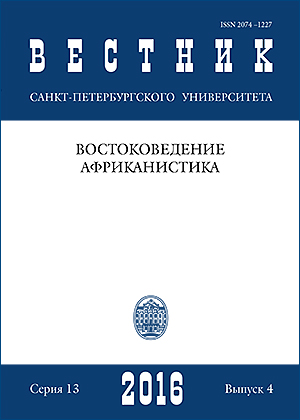Comparative analysis of morphemic and submorhemic neutralizations in Bantu pronominal paradigms (what they are for, and what they say about the language change)
DOI:
https://doi.org/10.21638/11701/spbu13.2016.402Abstract
This paper deals with a comparative analysis of the distribution of morphemic and submorphemic neutralizations in pronominal paradigms of the Bantu languages from different zones distributed into three geographical areas and Proto-Bantu reconstruction. The analysis shows that the neutralizations are not “occasional”, but rather systematic. Morphemic and submorphemic neutralizations are often in additional distribution, the more morphemic neutralizations in the paradigm, the less submorphemic ones. It is often important for paradigms to keep the structure of oppositions and neutralizations rather than the forms. All the neutralizations (1/2, 2/3, sg/pl) take place in all the languages despite the difference in forms. Sometimes 1/2 and 2/3 neutralizations are realized in cascade form (Basaa). It shows that all these neutralizations are crucially important to the ‘glue’ of pronominal paradigms. 1 sg tends to be in opposition to other pronouns and very seldom participates in neutralizations. 3rd person is “responsible” for sg/pl neutralization, plural — for 1/2 neutralization, 2/3 is distributed in both sg. and pl. 1/2 neutralization tends to be submorphemic, while other types of neutralizations can be both morphemic and submorphemic.
Keywords:
morphemic neutralizations, submorphemic neutralizations, Bantu languages, personal pronouns
Downloads
References
Downloads
Published
How to Cite
Issue
Section
License
Articles of "Vestnik of Saint Petersburg University. Asian and African Studies" are open access distributed under the terms of the License Agreement with Saint Petersburg State University, which permits to the authors unrestricted distribution and self-archiving free of charge.





